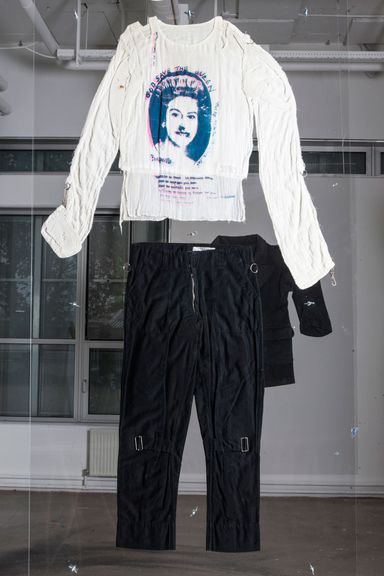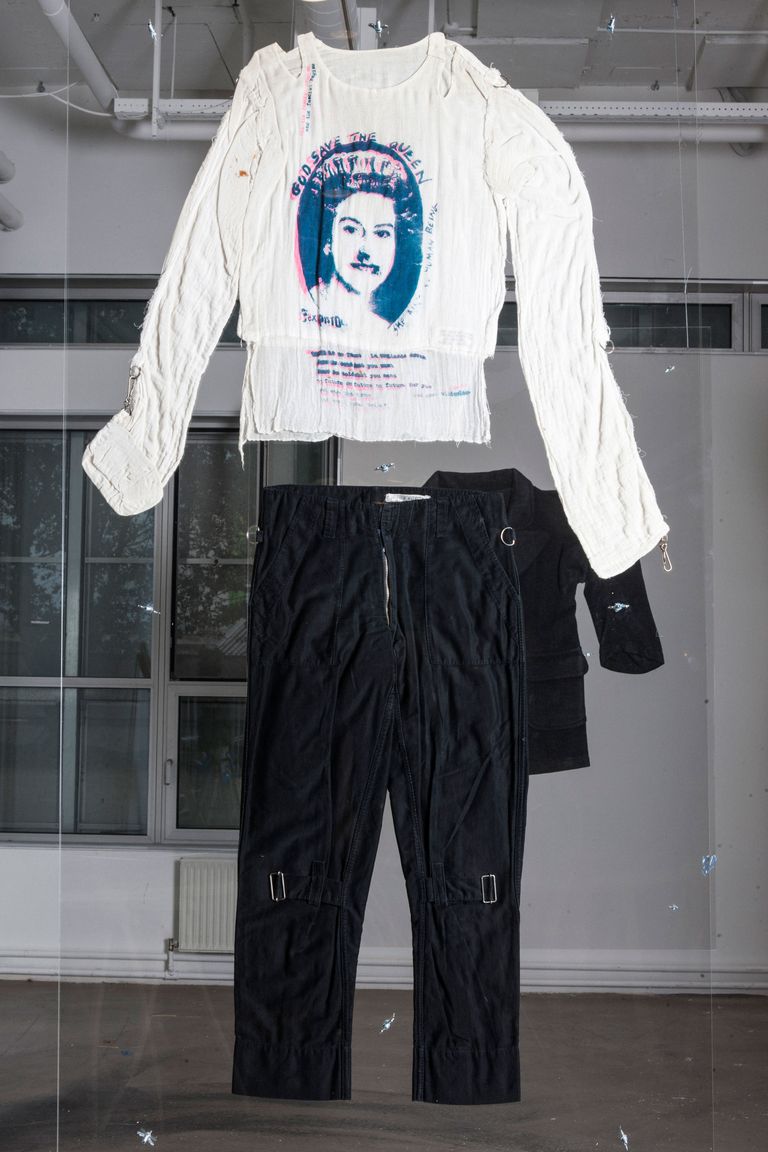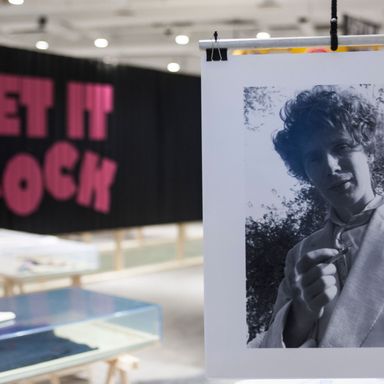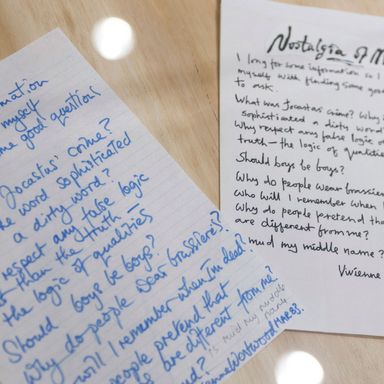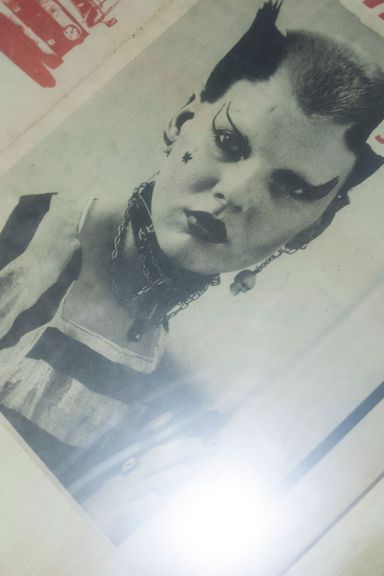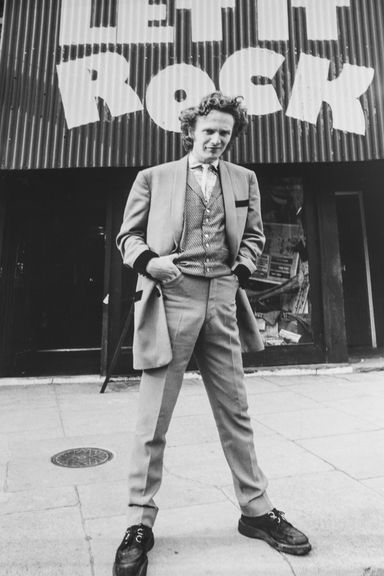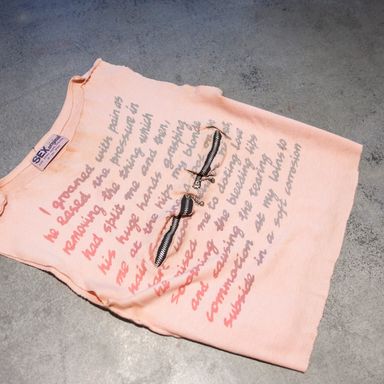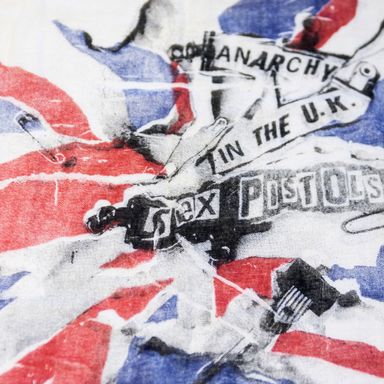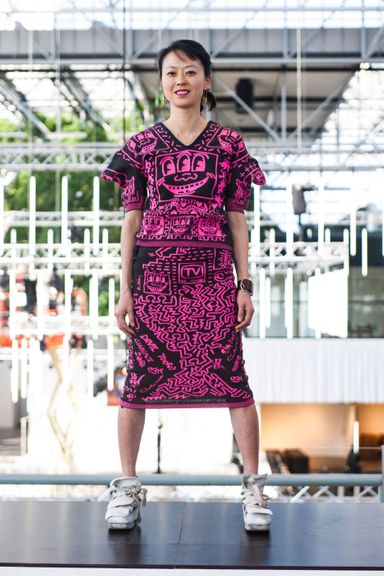The Man Who’s Partly Responsible for the Pharrell Hat
Most people know Malcolm McLaren for his ties to the music industry: The British artist and musician, who died in 2010, is best known as the former manager of the Sex Pistols, and also worked with the New York Dolls and Bow Wow Wow. Less well-known is the fact that he dated and collaborated with Vivienne Westwood for over a decade — not only did he encourage Westwood to pursue fashion in the first place (when they met in the early ‘70s, she was working as a primary-school teacher), but he also had a significant influence on what may turn out to be one of Westwood’s most enduring designs: The Pharrell Hat.
This week, an exhibition at the Copenhagen International Fashion Fair celebrates McLaren’s work with Westwood and his contributions to the fashion industry. Titled “Let It Rock: The Look of Music, the Sound of Fashion,” the show is named for McLaren and Westwood’s original pop-up shop, which opened in 1972 in West London. Over the next decade, the store would change names, concepts, and designs five times before it eventually became Worlds End, which Westwood still operates today.
“Malcolm was an artist ahead of his time,” says Young Kim, McLaren’s partner from 1998 until his death, who, along with Paul Gorman, curated the exhibition. “We take for granted the changes that he wrought. Malcolm is responsible for creating deconstruction in fashion, clothes that were inspired by fetishwear, clothes with slogans on them.” The show features designs from each shop displayed along with inspirations: for example, a copy of Alexander Trocchi’s Helen and Desire paired with a T-shirt designed from the text that reads, “I groaned with pain …”
The exhibit also includes notes McLaren gave Westwood for her autumn/winter 1982–1983 collection, the Nostalgia of Mud — which included the Buffalo Hat made famous by Pharrell. Westwood and McLaren’s partnership ended in 1983, and she took over the shop at 430 Kings Road, marking the end of their series of pop-up shops (which, according to Kim, she saw as “commercial suicide”) in favor of a more traditional retail space. In the years that followed, McLaren became more focused on his solo music career, though his ties to the fashion world never disappeared: Just before his death, he composed the soundtrack for Dries Van Noten’s fall 2010 show.
Click through the slideshow for a look at the exhibit, featuring some of Westwood and McLaren’s most influential designs.
